By Michael Schmidt, Dallas Branch Manager at Premier Trailer Leasing
You might think that trailers are the simplest part of your fleet. They’re just a box on wheels, right? Well, while that's true, it can be a little more complicated than that.
Dry vans are fully enclosed trailers, often referred to as boxes, that are one of the most high-demand freight options due to their versatility. Because they are enclosed, non-perishable goods can easily be transported regardless of weather and protected from theft. Unlike refrigerated vans, dry vans do not have climate control, so they should be used to transport goods that are not temperature sensitive. Their lower average rate cost also makes them a more affordable option.
If you are in charge of managing a fleet of dry vans, it’s important to understand how a dry van trailer is built. Anything that compromises the integrity of the trailer could cause the box to collapse or one item coming off the trailer on the highway could cause a safety issue. So it's essential you’re familiar with your trailers, and, of course, the maintenance that's required for them.
Join Michael on a Dry Van Walkthrough!
Dry Van Trailer Design
Although a trailer may seem quite simple, many complex design features are necessary to transport cargo safely and efficiently. A tractor, air, and power are the key components needed to make any trailer fully functional.
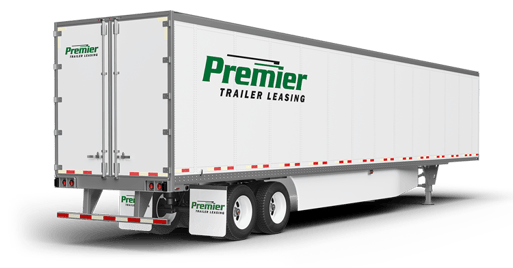
Exterior: Front Components
Let’s first cover some of the most important items you will find on the front of the trailer. These parts include:
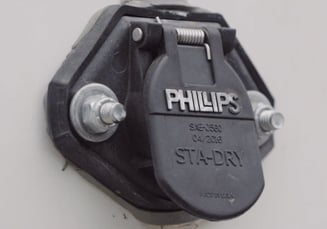
- The king pin located under the trailer allows the tractor to connect its fifth wheel.
- Glad hands provide an air supply to the trailer so that the driver is able to safely control the brakes on the road.
- A seven-way power source connects power to control the lights.
Lastly, our trailers here at Premier are equipped with a small solar panel that provides a trickle charge to the trailer's tracking device. You can track where your trailer is at all times on our website.
All of these items on the front of the trailer are covered in our pre-trip inspection.
Exterior: Side Components
Moving on to the sides of the trailer, you can find a number of panels, rivets, and bolts. Usually, a visual inspection is good enough to see if there are any cuts, holes, or other damage on the trailer that you need to be aware of before your trip. Some trailers are equipped with side skirts, which make the trailer more aerodynamic and fuel-efficient. Depending on your local regulations, side skirts may be required.
As you look down each side of the trailer, you'll notice red and white reflective tape used to make the trailer more visible at night. In addition, there are mid-signal lights so that other drivers are aware of when the trailer is turning.
Lastly, you can find the anti-lock braking system (ABS) light. If the ABS light comes on after the initial startup, during your trip, there's likely an issue that requires your attention.
Exterior: Rear Components
At the back of the trailer, you can find composite trailer doors. When closing doors, it's important to ensure a watertight seal as trailers travel through all kinds of different road conditions. Commonly used door types are roll-up and swing doors. An advantage of roll-up doors is that they can be easily opened from a warehouse's dock. However, you lose 2-3 inches of height at the top, so the best door type will vary depending on the application.
Finally, there’s a ride guard in the rear which is added so that cars do not slide underneath the trailer in an accident.
Exterior: Undercarriage Components
Now, let's take a look underneath the trailer. Components to look for include:
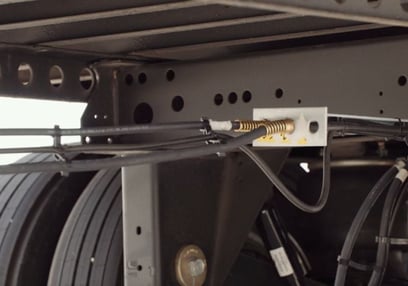
- Toward the front, the approach plate is where the king pin we mentioned earlier is connected to the upper coupler. Again, the tractor backs up and engages with the trailer at their fifth wheel.
- Heading down the trailer, you can see bars called cross members. During the pre-trip inspection, these are surveyed for signs of damage or deflection.
- At the center, the landing gear legs, which support the trailer after it’s been detached from the tractor, can move up and down at two speeds for greater capacity and ease of use. High gear moves the legs faster when the trailer is unloaded, while low gear provides more lift capacity when the trailer has cargo.
- You can also find the trailer’s K braces near the landing gear, which are important to inspect, too. They provide structural stability and make the trailer frame more rigid.
- The trailer bogie can be found connected to the rail and the rest of the box. This subassembly of wheels and axles support the air suspension to provide load transfer.
- There is an attached air release valve that can easily slide tandems into holes up and down the rail based on your use application or state regulations. Tandems change the weight distribution on the drive axles, providing more support.
- Airbags are located in the rear as part of the air ride suspension. There are two types of trailer suspension: air ride and spring ride. Most of Premier's fleet is equipped with air ride because it tends to be the preference of shippers, it's gentler on cargo, and it generally improves driver satisfaction.
Interior: Damage Prevention Components
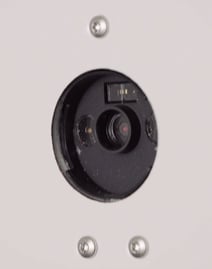
The first thing you'll notice inside the trailer is the threshold plate. This metal plate prevents damage to the wood floor from the warehouse's dock plate. Going down each side of the trailer, scuff liners protect the side walls while the trailer is being loaded and unloaded. Metal lining along the walls, referred to as logistics posts, helps secure cargo inside the trailer by providing a place to tie ropes, cords, or straps.
Interior: Sensors
At the front of the trailer, you can find the cargo sensor. The benefit of the cargo sensor is that you can log into the Premier Trailer Leasing portal and check to see if your trailer is loaded without even leaving your office or going out to your yard.
Dry Van Maintenance and Inspection
Like any other vehicle, regular trailer maintenance is required to help keep your fleet operational and your drivers safe. Accurate maintenance records ensure preventative measures are taken before they become a larger problem.
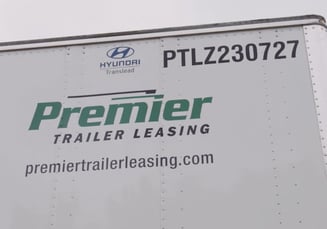
VIN and License Plate
Starting at the front of our trailers, keep an eye out for a decal at the top right corner that displays letters and numbers. Often referred to as VIN (vehicle identification number) information, these codes serve as a unique identifier for each individual trailer. VIN and license plate information can be found online to pull registrations, current renewals, or annual inspection information on the Premier Trailer Leasing website.
In addition to the VIN decal, a VIN plate is included, as well as an up-to-date annual inspection verification sticker. Just as with any other personal or commercial vehicle, annual inspections are required for all of our trailers.
Registration Bubble
Above the annual inspection sticker, you can find a small box which we call a registration bubble. Registration bubbles are used to hold important documents such as the registration, current renewal, annual inspection information, or other items that the driver may need during their trip (e.g., manifest information). If you don't see one of these at the front of your trailer, it may be located on the side of the landing lights.
Tire Condition
Of course, we can’t forget to mention that tires are a critical component of every trailer.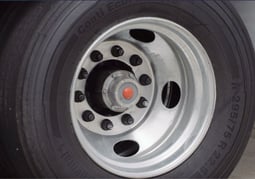 It’s important to select the best tires for your trailer because they are the most expensive trailer maintenance item.
It’s important to select the best tires for your trailer because they are the most expensive trailer maintenance item.
A responsible driver must regularly check the condition of all tires, maintaining at least the 2/32nd required legal tread depth. Tires should be adjacent, within 4/32nd, and properly inflated with an intact valve stem. Lastly, lug nuts should be properly bolted, lubricant-filled, and with no obvious signs of leaking.
Find the Right Trailer at Premier Trailer Leasing
As you can see, trailers are much more than boxes and require consistent maintenance to ensure they continue to perform for you and your company. If you have any questions about semi-trailers, please reach out to a member of our team or visit our website to learn more about the trailer options we offer. We're happy to help keep your freight moving!
Michael Schmidt is the Branch Manager for Premier Trailer Leasing's Dallas-Forth Worth Metroplex. His 12 years of sales experience includes branch operations, territory sales management, automotive leasing, account management and branch equipment services.

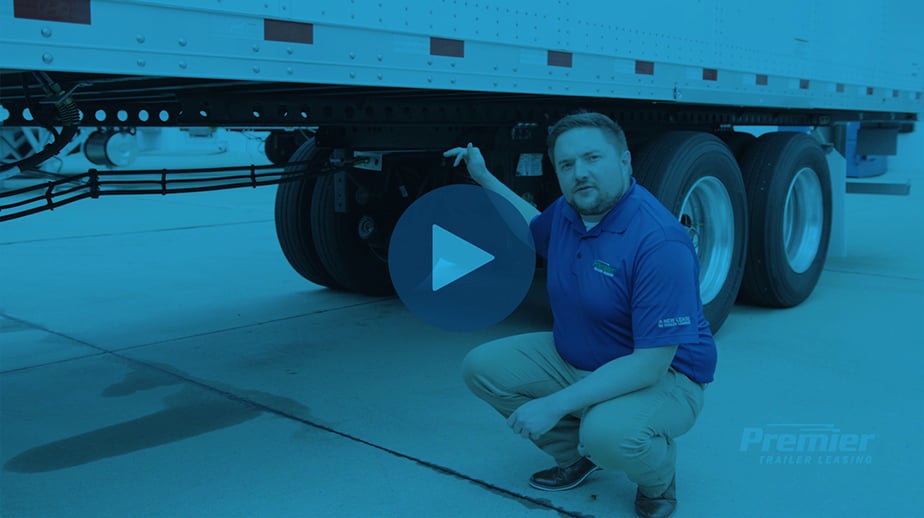

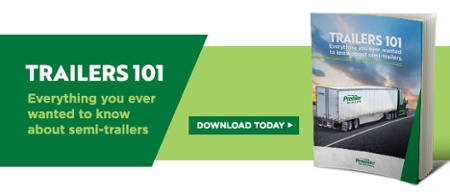

.png?width=960&length=960&name=924x518_MM_lighting%20(1).png)

